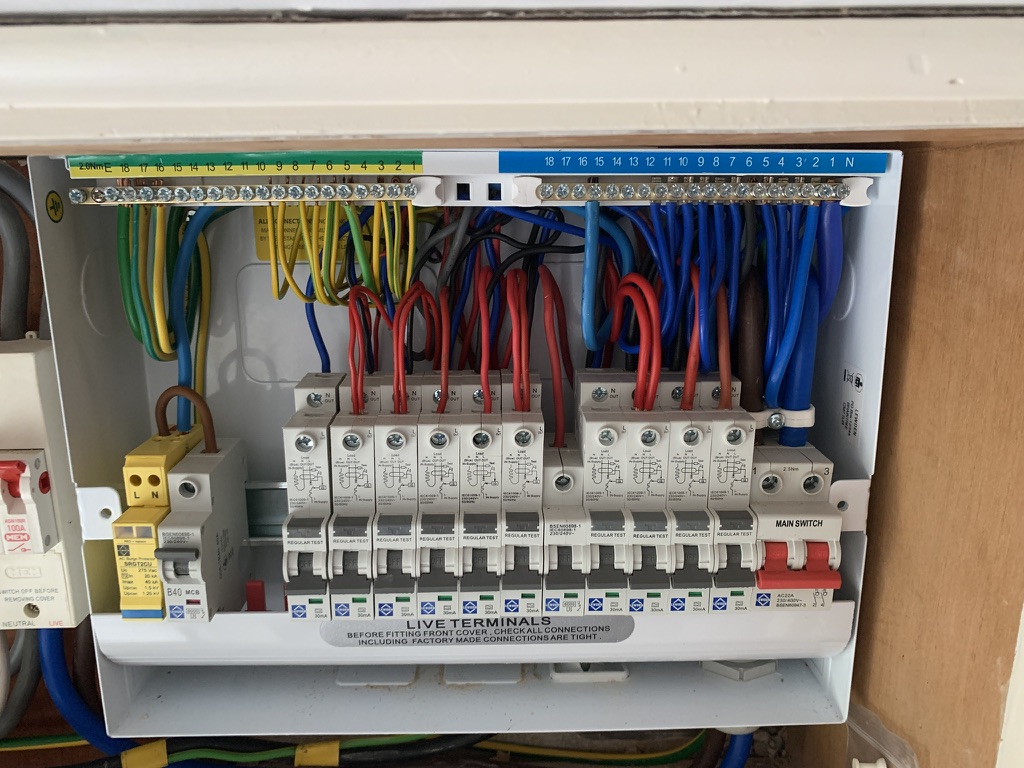The Duty of Customer Units in Reliable Power Management Equipment
Consumer devices are indispensable to reliable power administration systems, offering as the key distribution points for electrical power within structures. The advent of wise innovations has further boosted their functionality, allowing for real-time data monitoring and nuanced energy usage evaluation.
Comprehending Customer Systems

Understanding the duty of customer systems begins with recognizing their necessary feature in guarding electrical systems. By isolating faults within specific circuits, customer devices prevent extensive interruptions and possible fire threats. This seclusion is attained with making use of breaker that trip or merges that blow when a mistake is detected, consequently reducing off the electrical flow to the influenced circuit.
In addition, consumer units promote the organized distribution of power, boosting the effectiveness of power use. They enable the methodical management of electric loads, which can be specifically vital in business and commercial settings where need can change substantially. Appropriately conserved customer units add to the durability of electric systems and help in decreasing downtime created by electrical failings, inevitably supporting the seamless procedure of energy-dependent facilities.
Smart Technologies Assimilation

A key benefit of wise customer units is their capacity to utilize advanced algorithms and machine understanding for anticipating analytics. This permits preemptive changes based on usage patterns, weather prediction, and other variables, considerably enhancing general efficiency. Clever consumer devices promote need action programs, where power use can be dynamically adjusted during optimal durations to maintain the grid and lower prices.
The integration of sustainable energy resources, such as solar and wind, is also streamlined through wise consumer units. By smartly handling the intermittency of these resources, these devices ensure a balanced and trustworthy power supply. In addition, wise consumer units boost customer involvement by giving detailed insights and remote capacities via mobile applications, promoting a much more aggressive technique to power preservation and sustainability.
Tracking Energy Consumption
Structure on the capacities of smart modern technologies combination, checking power usage comes to be a critical emphasis within energy monitoring systems. By leveraging advanced metering facilities (AMI), real-time information on power use can be accumulated at granular degrees, supplying important insights into usage patterns and peak need periods.
Smart meters and Internet of Points (IoT) gadgets play a crucial function in this monitoring procedure. These gadgets can track power usage in real-time, transferring information to central systems for analysis.
The combination of these innovations not just encourages consumers with detailed info regarding their power use however also sustains energy companies in handling tons distribution extra successfully. Ultimately, continuous and accurate surveillance is vital for accomplishing power efficiency, cost savings, and sustainability objectives within power monitoring systems.
Optimizing Home Appliance Usage

One efficient method entails recognizing top and off-peak hours to change energy-intensive tasks, such as washing or dishwashing, to times when power need is reduced. This not just minimizes stress on the grid but additionally maximizes lower power tariffs. Furthermore, incorporating device discovering algorithms enables for predictive maintenance, guaranteeing appliances operate at optimum effectiveness and extending their lifespan.
Energy management systems can likewise include user-specific choices and behaviors to customize appliance usage timetables. Smart lights systems can change brightness based on tenancy and all-natural light schedule, while Heating and cooling systems can maintain comfort degrees without excessive energy use.
Encouraging Sustainability
Advertising sustainability within energy monitoring systems entails not only boosting effectiveness but also fostering eco accountable methods. Customer devices are essential to this procedure, as they offer real-time information and control mechanisms that make it possible for individuals to check and top article lower their energy usage. By leveraging sophisticated modern technologies, consumer units can recognize energy-saving opportunities and assist in the integration of renewable resource sources you can try this out like solar and wind power.
One vital facet of advertising sustainability is enlightening consumers on the advantages of liable energy use. Via comprehensive insights offered by consumer units, customers can make enlightened decisions that reduce their carbon impact. As an example, these devices can recommend ideal times for operating high-energy appliances based on grid need and renewable energy schedule, consequently decreasing reliance on fossil gas.
Furthermore, customer systems sustain the adoption of wise grid technologies, which enhance the total effectiveness and dependability of power distribution. By enabling two-way communication in between consumers and utility providers, these systems can dynamically readjust to energy demands, decreasing waste and promoting the use of lasting power methods.
Final Thought
Consumer systems, as indispensable components of energy monitoring systems, substantially improve electric safety and security and efficiency within structures through circuit defense and wise technology assimilation. Additionally, the consolidation of sustainable energy resources advertises lasting methods, contributing to reduced general energy consumption and reduced carbon footprints.
Advancements in wise modern technologies have actually transformed the capabilities of energy management systems, especially through the combination of clever customer units.Structure on the capabilities of wise modern technologies assimilation, keeping an eye on power consumption ends up being an important focus within energy management systems.Efficient home appliance use optimization is an essential part of energy monitoring systems, intending to boost efficiency and minimize unneeded power consumption.Consumer units, as integral components of energy administration systems, dramatically boost electrical safety and efficiency within structures through circuit defense and smart innovation assimilation. Additionally, the consolidation of eco-friendly important link energy sources advertises sustainable methods, contributing to decreased overall energy intake and lower carbon impacts.